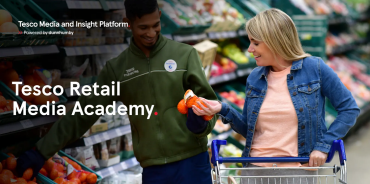Opening doors unimagined: how new AI is shaping the next generation of assortment science
Getting the right products on shelves in the right stores for the right customers sounds like a no brainer, right? Yet mastering assortment across banners, locations and store formats is still a huge challenge (and missed opportunity) for all retailers. Cracking the Assortment challenge has been a laser-focus for dunnhumby throughout our history - and one we help many of the world’s leading retailers to solve today.
Indeed, the data science framework we established some 30+ years ago has actually helped shape how our sector thinks about assortment as a whole.
At the heart of that framework is the principle of “breadth over depth”. The focus here is on satisfying customer need states – the factors that drive them to make a purchase in the first place. If a range contains five varieties of ketchup but no mustard, for instance, then it’s likely some shoppers will be unsatisfied. To counter that, retailers need to ensure that all need states are covered before any duplication (i.e. variety) is added to a range.
Naturally, data science plays a key role here, as well as how it’s applied. As well as helping us to understand those customer need states – and which products are most likely to satisfy them – retailers also need to be able to do so quickly and at scale. And, with decades of refinement behind them, the tools and techniques that we’ve developed now allow retailers to do that at the literal click of a button, without any manual input.
Of course, we’re always looking to the future, too. dunnhumby has been leveraging artificial intelligence (AI) for some time already, and that has allowed us to make some considerable leaps in terms of our assortment-related capabilities.
Ever keen to help our clients automate and refine their processes, we’re now beginning to use those advances, and some cutting-edge new techniques to tackle some of their biggest ranging challenges. Let’s take a look at a few specific use cases.
- Localised ranging
Localised ranging isn’t new; we’ve long known that certain products perform better in some stores than others - protein shakes sell well in stores near gyms, for example.. A store in a less affluent area might require a subtly different range to one in a more prosperous location, for example. Retailers have clustered and segmented their ranges with that rationale in mind for years already.The challenge for retailers here is that broad assumptions can be reductive, leading to self-fulfilling results. If a top-tier brand has never been sold in a less affluent area, after all, can we say for sure that it will underperform there? That’s the kind of question that any retailer with an interest in truly customer-centric localisation needs an answer to.Fortunately, advances in AI have given us the ability to find those answers in more intelligent ways. By looking at the relationships between products and stores, advanced recommender systems can detect relationships and highlight opportunities with a much lower risk of error. Ultimately, that leads to better decision-making – and a better experience for customers. - Shelf space planning
Will it fit? Creating a good range isn’t just about selecting the right products; it’s about making sure that they fit on the shelf too. That can be an arduous and time-consuming process for retailers; changes in pack dimensions, new products, and new commercial agreements can all require a planogram to be redrawn.As well as being able to accommodate the right mix of products, a shelf layout needs to make sense to shoppers, too. Customers are unlikely to react well to a shelf that has different varieties of the same product dotted across the fixture, or one that has large jars teetering on the top edge. So merchandisers need to account for how customers “read” the shelf, too.AI’s role here is to act as the intermediary. By learning from existing planograms and customer behaviour, AI can help us choose ranges that optimise sales potential by optimising space at the shelf. Not only does that save planners time, freeing them up from endless reworks, it ensures that layouts are as intuitive as possible for customers too. - Predictions
Accurate predictions are critical for any retailer, but very difficult to get right. While it might seem like it’s simply a case of adding up expected sales for individual products, nothing could be further from the truth. One key factor at play here is that of demand transfer. When a range introduces products that are overly similar to those that are already stocked, they can end up eating into each other’s sales. For example, removing a certain pack size or flavour of biscuit won't necessarily reduce category revenue by its full sales value.With the help of machine learning, though, we can start to learn about the strength of the relationship between similar products. Predictive models show what will happen to customer demand when products are introduced to – or removed from – a range. Essentially, AI helps us to create better and more accurate forecasts.
For more information on the new advances in AI which are powering dunnhumby Assortment, visit dunnhumby.com/dunnhumby-assortment
At dunnhumby, we're harnessing the transformative potential of AI to redefine assortment. Our cutting-edge algorithms and machine learning models are pushing the boundaries of what's possible in retail analytics. Using these advanced technologies, we're able to process and analyse vast amounts of data at unprecedented speeds, uncovering deep insights that were previously hidden. This allows us to offer retailers AI-powered solutions that go beyond traditional assortment planning, enabling more accurate predictions and hyper-personalised recommendations.
As we continue to innovate, we're opening doors to possibilities that were once unimaginable, setting new standards for efficiency and precision in retail assortment science. For more information on the new advances in AI which are powering dunnhumby Assortment, visit dunnhumby.com/dunnhumby-Assortment
Looking for more information on some of the ways in which AI can be employed within the grocery retail industry? Why not check out:
TOPICS
RELATED PRODUCTS
Actionable insight for sustainable category growth
Boost category performance and grow salesCreate customer-centric ranges using AI-powered science
Customer-centric RecommendationsThe latest insights from our experts around the world
How to overcome assortment challenges? Lessons from history
Unlocking success: why agency planning teams should get Tesco retail media certified
Smart Retail: AI cheat sheet for retail execs




